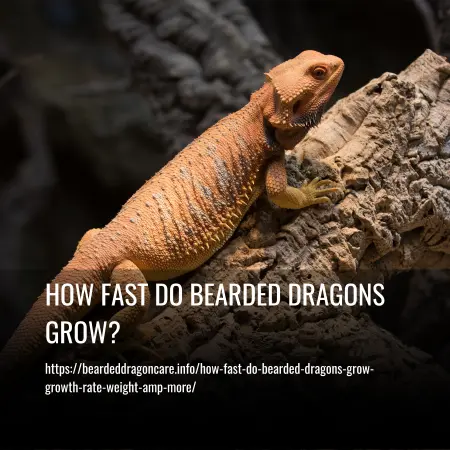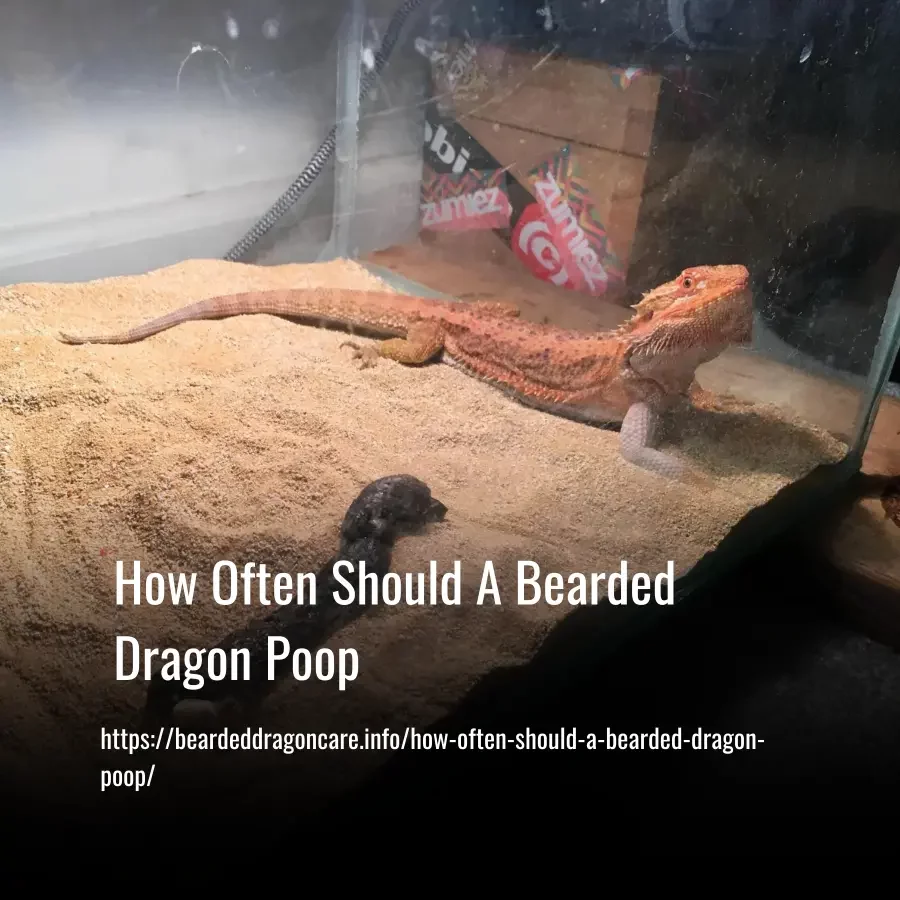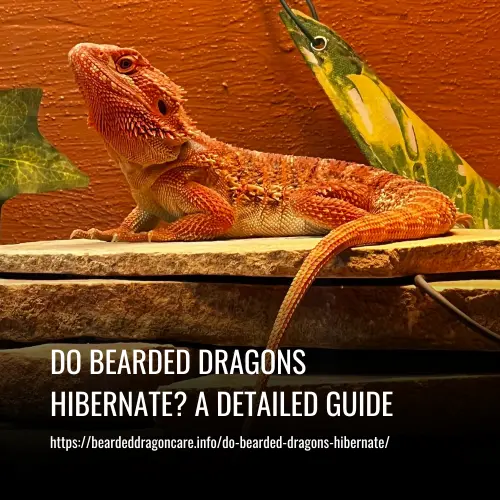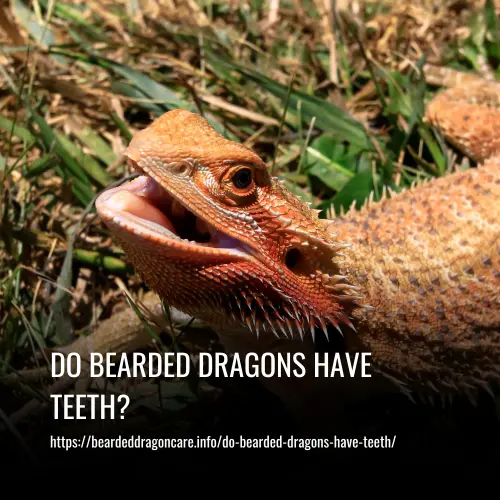Bearded dragons are part of the reptilian family and they’re quickly becoming a popular pet. Not only do they have a unique look and live longer than other household pets, but they grow at an impressive speed!
If you’re considering getting a bearded dragon, it might be worth learning how fast they can reach full size so that you can prepare for these growth spurts. Bearded dragon owners want to keep their beloved lizards happy and healthy, so let’s dive into how fast these reptilian friends mature.
In this article, we’ll be looking at how bearded dragons grow in terms of both size and age. We’ll also uncover some secrets about their nutrition that could help them reach full maturity sooner.

How Big Do Bearded Dragons Get When Fully Grown?
Bearded dragons are a popular pet due to their small size and manageable care requirements. But how big do they get when fully grown? To properly care for your bearded dragon, it’s important to understand how quickly they grow.
Young bearded dragons can grow up to 1 to 2 inches per month in their first year of life, with the potential to reach 12 – 24 inches long as adults. That includes the tail! Generally, they’re considered fully grown after 11-12 months, though some won’t reach their maximum size until 18 months into life.
There isn’t an exact formula for predicting exactly how big your dragon will be when grown because many factors influence growth rates, such as diet and environment. Therefore, it can vary from individual to individual.
If you’re thinking about getting a bearded dragon as a pet but are worried about space requirements, don’t fret; at 12 – 24 inches long once fully grown, these reptiles are still quite manageable even in smaller homes!
How Fast do Bearded Dragons Grow?
Bearded Dragons grow incredibly quickly – faster than you’d think! If you adopt a baby Bearded Dragon, it won’t take long before you have a full-fledged adult dragon on your hands.
These reptiles typically reach 95% of their full size by 12 months of age and when they are 18 months old they are fully grown. It’s thus important to prepare in advance and know what kind of resources and energy it takes to care for a baby bearded dragon since their growth will be so rapid.
The length of a bearded dragon can range from 15 to 18 inches, growing about an inch or two past the 12-month mark for some. However, most of the growth is done within their first year with an astronomical rate witnessed within the first few months post-adoption.
It’s amazing how fast these creatures unfold into adulthood – one moment they may appear to be just tiny babies, and then quickly change into a fully grown specimens seemingly overnight!
Bearded Dragon Growth Rate
Bearded dragons are impressive creatures who grow at a remarkable rate. During the first six months of life, they tend to add up to an inch in length each week! However, after that initial growth spurt, their rate of growth slows down significantly.
By around the one-year mark, your dragon’s body should start filling out and look less lanky than when it was younger. Weight gain is also common right around this time mark so expect your dragon to bulk up during this period too.
All in all, keep an eye on your bearded dragon’s growth as they mature and you’ll be able to accurately track its progress over time.
How To Make Bearded Dragons Grow Faster
Bearded dragons, when given the proper care and nutrition, can reach up to two feet in length. Growing rates can be quite rapid, with some juveniles reaching a growth rate of one inch per week. There are factors under your control that can influence your pet’s growth rate, such as its cage size and placement, type and amount of food available, type and amount of UV light exposure, and the presence of vitamins or nutritional supplements.
To get your bearded dragon growing faster, make sure it is placed in a tank of at least 40 gallons – larger if you have more than one dragon. For hatchlings up to 12 inches in length, a 15-gallon tank should do; but as the dragon grows, so should it’s home. Also, remember to provide proper lighting for heat–an ideal basking spot would be between 90 to 115 degrees Fahrenheit–so that its digestion remains active.
When feeding your pet dragon, give it as much as it can consume to encourage fast growth. This could mean up to 12 crickets three times daily; using nutritionally enriched feeder insects to optimize their dietary content. Supplement its diet with calcium-rich greens like collard greens and kale along with calcium supplementation every other day either on crickets or sprayed over vegetables. Make sure you also provide good hydration levels–sprinkling water directly over the head or misting its veggies before serving will help prevent dehydration which may lead to thinning out in resultant growth slow-down.
Warnings
When it comes to owning a pet dragon, there are several warnings that must be taken into consideration. Firstly, pay special attention to regulating the size of food given to juvenile dragons; overfeeding can lead to partial paralysis and hind leg extension. Additionally, if you’re taking your dragon outside or allowing it to roam about the house, double-check for anything that may be poisonous.
Furthermore, feeding high-fat foods on a regular basis can make your dragon grow faster but shortened their lifespan by half; so the diet should always be watched closely. With these warnings in mind, you’ll have a healthy and happy dragon companion!
Bearded Dragon Growth Stages
Bearded dragons grow quickly, reaching their full size in about two years. During this time, they go through several growth stages.
Baby Bearded Dragon Size
Baby Bearded Dragons, often referred to as hatchlings, grow up to a whopping nine (sometimes eleven) inches in just two months! At such a rapid pace of l growth, they can reach up to 1.23 ounces. These tiny dragons are growing at an impressive rate of 1-3 inches per week and with an average appetite of around 50 crickets per day, that’s no small feat.
If you’re looking for an exciting pet to watch grow before your eyes, then the Baby Bearded Dragon is definitely one to consider. As they quickly increase in size, you might be surprised at just how much they can grow in such a short time frame!
Juvenile Bearded Dragon Size
By the time they reach two to seven months old, juvenile bearded dragons can grow to about eighteen inches long and weigh up to nine-point eighty-eight ounces.
In addition, juveniles will continue growing in size month by month at a rate of 1-3 inches per month. Furthermore, the average weight gain each month is around 1.76 ounces, making them larger and heavier over time!
Bearded dragons are truly amazing creatures who grow rapidly when they are young. Not only do they reach a considerable size in a relatively short period of time, but they also increase their weight significantly during that same amount of time. It’s fascinating to watch them grow and develop as they get bigger day by day!
Adult Bearded Dragon Size
When it comes to adult bearded dragon size, you can expect them to reach anywhere from 18-22 inches in length once fully grown. They usually weigh about 13-18 ounces when fully matured and can grow up to 24 inches from head to tail.
The process of maturing can take from 8-18 months, with each lizard reaching sexual maturity at different points. If you’re curious as to exactly how big your Beardie will be, you can consult a bearded dragon growth chart which is created specifically for tracking the size of these awesome little lizards!
Bearded Dragon Size Chart By Age
The Bearded Dragon Size Chart by Age is great for pet owners who may be wondering how large or small their pet beardies are going to get. The chart helps give a general idea of what to expect as far as weight and length at various stages of their dragon’s life.
Every bearded dragon is unique, but one can generally rely on the chart to help gauge whether the growth they observe in their particular dragon is within normal ranges. That said, if there are any unusual measurements, then it may be a good idea to contact a vet.
| Age | Length | Weight |
| Hatchlings | 3 inches | 4-6 grams |
| Babies (1-3 months) | 3-9 inches | 4-20 grams |
| Juveniles (3 to 11 months) | 8-24 inches | 20-400 grams |
| Adults (12-18 months) | Female: 16-19 inches Male: 19-24 inches | 400-550 grams |
The chart provides approximate sizes for bearded dragons in different age groups, and can also provide information on when growth tends to slow down significantly. This makes it an invaluable resource that pet owners should take advantage of.
Juvenile Bearded Dragon Size
Juvenile Bearded Dragons range greatly in size, depending on their age. At 3 to 11 months old, they are in the midst of a dramatic growth period, during which they can increase in length from 8 to 23 inches and gain weight between 20 and 400 grams.
This range reflects the 8-month period that Juveniles undergo before they reach nearly full size by month 11. Knowing these sizes is critical for Pet Owners so that they can ensure their dragons have enough space and are provided with the appropriate-sized accessories.
Sub Adult Bearded Dragon Size
When it comes to sub-adult bearded dragons, the size difference is pretty small. On average, you can expect them to measure between 15 and 24 inches and weigh between 300 and 500 grams.
This is because these lizards typically only grow an additional inch between their 12th and 17th month of age, and may only gain 20 grams as well. But don’t let this fool you – just because they’re not growing much doesn’t mean that they aren’t healthy! A lack of size change simply means that your bearded dragon has hit its mature size.
Adult/Full-Grown Bearded Dragon Size
Adult or full-grown bearded dragons are considered a manageable size for pet owners, not quite as small and delicate as lizards like geckos but smaller than iguanas and monitor lizards. Generally speaking, they measure between 16 to 24 inches in length and typically weigh 300 to 550 grams.
Though there have been cases of them growing up to 26 inches long, this is incredibly rare. Males are usually slightly larger than females, with males measuring 20-24 inches and females measuring 16-20 inches.
Meanwhile, a beardie is deemed an adult at the age of 18 months, when 99.9% of their owners have their lizard at its full size. This size is determined by a variety of factors such as gender, diet, enclosure quality & size as well as genetics & breed.
Possible Causes For Slow Growth
If you’ve noticed that your bearded dragon is growing slowly, there are certain factors that could contribute. While growth rates and sizes will vary between species, it’s important to understand the various influences that can impact your bearded dragon’s potential size or growth rate.
Some of these influences include the quality of care provided, light exposure and temperature regulation, humidity levels, the diet of your pet, and supplementation among others. With proper care and attention to detail, you can help ensure your pet has all the necessary resources for healthy growth and development.
Improper Tank Setup
Tanks that are either too small or too big can seriously hinder a bearded dragon’s activity level. If the tank is too cramped, then it won’t be able to explore or stay active.
Conversely, if the aquarium is too large, the fish can become stressed, leading to a decrease in appetite and potentially weight loss.
The ideal tank size for baby dragons should be 10-25 gallons while juveniles and adults should get a 75-gallon tank size. Lighting also plays an important role as UV rays boost metabolism while aiding in calcium absorption which will give them the energy to stay physically active when needed.
Finally, adding a heat lamp into their tank is crucial so that they have an optimal temperature gradient of 85-100 degrees Fahrenheit with warmer areas designed for basking and cooler pages shaded areas used for cooling off. If there isn’t enough heat present in the area then it may affect digestion leading to unwanted weight loss.
Not Proper UVB Lighting
If you own a bearded dragon, it’s essential that you provide them with proper UVA and UVB lighting. Without this, your dragon is at risk of slowing down or stunting their growth since they’re unable to properly absorb the calcium in their diets. It can also lead to lethargy and a loss of appetite, not to mention weakened or brittle bones.
That’s why it’s important to have the appropriate UVB light bulbs in your beardie’s tank. The TEKIZOO lamp for reptiles and amphibians produces strong and consistent UVB and UVA for your pet. This bulb is compatible with a range of enclosures, despite its compact 6.3 x 4.5 inches size, as every bulb goes through strict testing before being packaged.
It’s worth mentioning that these UVB bulbs need to be replaced around every 6 months, so make sure you keep track of this process in order to ensure your pet’s health.
An Insufficient Diet
Having an insufficient diet for your bearded dragon can be detrimental to its growth and development. During their first three months, which is commonly referred to as the baby phase, it is particularly important that your pet gets plenty of protein-rich insects.
For optimal health and safety, it’s advised to purchase insects from a trustworthy breeder or retailer, as this will ensure the bugs are free of chemical toxins. Additionally, feed your insect pet three times daily during its growth phase.
In addition to the insects, bearded dragons will also need fresh or thawed frozen veggies as they get older and bigger. As your beardie grows, gradually replace some of the insects with more vegetables so that they can reach their full-size potential. Not having an adequate diet could potentially stunt their growth and health.
Early Brumation
Bearded dragons, like their cousins in the wild, enter a slumber-like state known as brumation when winter approaches. This extended period of rest helps them conserve energy and survive the harsh winter months.
However, it’s not advisable for young bearded dragons to go into brumation; this is because they use these early years to grow and reach their full size. If they spend this time resting and avoiding food, they are setting themselves up for possible growth delays.
What makes matters worse is that brumation in young bearded dragons can be hard to identify, so it’s important to pay close attention to your dragon and contact a veterinarian if you observe any changes or symptoms of early brumation.
It’s essential for every bearded dragon owner to understand this process, which is why we recommend reading our guide linked above and consulting with your vet if necessary
Disease
The disease can have a serious impact on your bearded dragon, particularly if it strikes while they’re still growing. The effects of illness on growth can range from decreased appetite leading to improper nutrition to parasites robbing the beardie of vital nutrients.
To prevent this from happening, it’s essential to follow good care practices for your pet. Cleanliness is key – keep their enclosure and water clean, feed insects that were purchased rather than caught in the wild, and maintain the proper humidity and light levels in their cage. Following these fundamental steps will go a long way toward preventing your beardie from getting ill and help ensure they reach their full potential size.
Factors That Influence How Big A Bearded Dragon Can Get
It’s impossible to predict the exact size of your bearded dragon but there are a few factors that can influence their growth. The first is gender, with males usually growing larger than females. Additionally, lighting and temperature have an effect on your dragon’s size. Having the right levels of light and heat in a clean terrarium will give them the best chance of reaching their full potential.
A balanced diet with enough hydration is also important for a dragon’s growth as well as calcium supplementation if necessary. Brumation– putting dragons into hibernation for health reasons– before 12 months old can stunt growth so it’s important to pay attention to that as well. Stress levels, illness, or any other sicknesses can also impact how big they get, so it’s essential to follow a proper care routine and provide the correct environment for your dragon.
FAQs
How long does it take for a Bearded Dragon to grow to full size?
Bearded dragons typically reach full maturity and size within 8-18 months, measuring a length of 22-24 inches when fully grown.
When do Bearded Dragons stop growing?
Bearded dragons typically stop growing after 11-12 months; in some cases, they can keep going until they are 18 months to two years old. At this stage, further growth won’t be in size but rather it will be in muscle mass.
Conclusion:
All in all, the growth rate of your bearded dragon gives a good indication of whether it is healthy and happy. With the right care, nutrition, and environment, you can help ensure that your pet enjoys a long and healthy life.
Understanding how to monitor its growth rate can help you be aware of any health issues that might come up down the road. By following our advice above and providing quality care for your bearded dragon, you’ll be able to keep a close eye on your pet’s progress.


